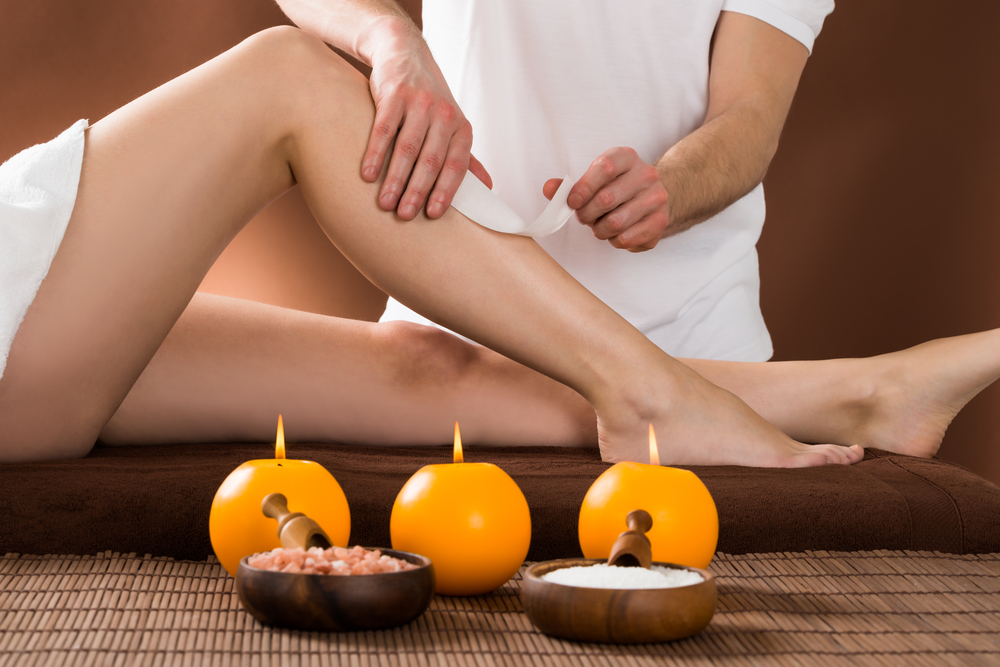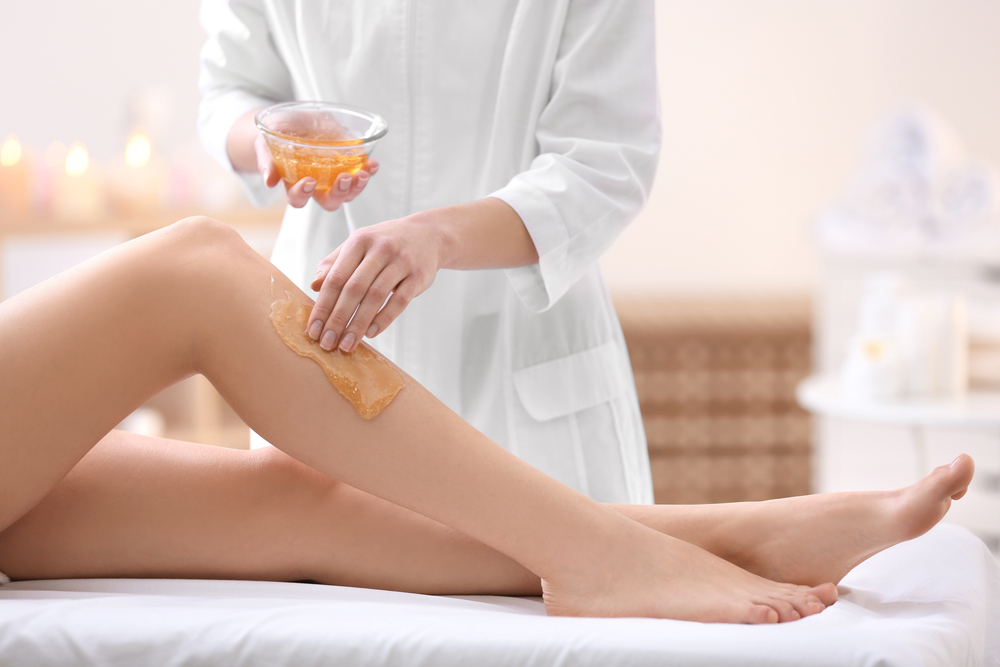In all times men and women wanted to look perfectly and have an ideal body. But undesirable hair appearance makes us look for new methods to get rid of it. A lot of companies specialised on beauty market and adverts say that they know the best method only for you. But after buying their products or services we are still disappointed with the result. So, what to choose to get an adorable body, throw complexes away and save money?
The most popular hair removal methods are shaving, sugaring, waxing and laser hair removal. The first is the most fast and affordable, but has its flaws. Regular shaving makes our body hair more tough and stiff. That is why we will need to perform the procedure more often in the future. Blades are also harmful for the skin cover, causing dryness and irritations. So, it is necessary to find another ways to remove hair for longer with minimised aftermaths. Laser epilation, which is a kind of laser hair removal treatment, is the most expensive technique now, because it supposes the usage of special equipment, which is not cheap. The effect of a laser hair removal treatment is the most effective. But to achieve it, you need to get a deep course of procedures for a long period of time. There are also two other ways of epilation: waxing and sugaring. They are quite similar, but have their own features, which will help you to choose. Let’s discover together, which one is better for you!
Waxing: Main Features of the Procedure
This technique firstly appeared in the Ancient Rome. People used beeswax among traditional methods as threads, limestone powder and tweezers. After the ancient times depilation became less popular due to strict puritan rules. So, only in the beginning of twentieth century it came back and became the compulsory part of our hygiene.
Today we use three types of wax divided by its temperature. Cold one without heating (room temperature) is less effective for long time periods. It helps to remove hair only from the top layer not touching its follicle. Because this method doesn’t eradicate hair completely, it will appear in a week. Traditional waxing is usually performed with warm mixture (up to 98-104 degrees Fahrenheit). It is used for big body areas, for example, legs, arms or back. After the wax is applied to the treated zone, an esthetician uses special paper or cloth bandages to remove it fast. This way of epilation removes dead skin cells too and works as a peel. For bikini area it is better to use the third type – hot (chocolate) wax. It could be heated up to 140 degrees Fahrenheit. This way is less painful, because due to the temperature skin cells and pores open and reveal hair follicles.

Ouch-factor: As we said earlier, waxing removes hair from wide body zones at the same time. Furthermore, we should pull the bandage against the direction of hair growth. That is why, such method could be harmful. Also, high temperature causes unpleasant feelings, but helps to reveal pores.
Allergic reactions: Among natural wax the mixture contains special chemical adds, which improve some qualities. If you have any allergy on the ingredients – inform the esthetician before the procedure.
Procedure Duration: Visit to the cosmetologist won’t take much, because we treat wide body area at the same time. It doesn’t need several attempts.
Aftercare: It is necessary to use wax remover – special oil to clean out its rests carefully. Sticky mixture adheres to live skin, vanishing the outer layer from dead cells. So, while your body cover is heated up by the procedure you can apply some creams or lotions. They will penetrate through pores quicker and absorb inside skin.
Cost: Waxing is cheaper then laser and even sugaring but everything depends on the paste type, body area and skin sensitivity.
Sugaring: Main Features of the Procedure
The second name of this popular technique is persian waxing. Historically, we suppose that sugaring was discovered in the Ancient Egypt. After this it spreaded through Arabian Peninsula to Persia. There was nice climate to cultivate and produce sugar. For example, this agriculture wasn’t popular in Europe, where people used beeswax instead.
The traditional paste is based on three main components: sugar, lemon juice and water. The mixture is heated up to 77-98 degrees Fahrenheit. It is lower than wax temperature, so you won’t definitely burn sensitive skin. The consistency of sugar paste allows it to penetrate into the cells, envelop the follicle and remove the whole hair body. The esthetician performs sugaring manually without any bandages, touching and massaging treated area to reduce pain. The technician forms paste ball, then unrolls it against the direction of hair growth and removes it in a quick pace. Because of this technique we can minimise the appearance of ingrown hair. Manual procedure takes more time but is less painful. Sometimes sugar paste can’t remove all undesirable hair on the skin at once. So the specialist has to repeat the action for several times.

Ouch-factor: Body sugaring is less painful and even traumatic than hot wax. As we have said, it isn’t necessary to heat the mixture up to 40 degrees. Therefore, it won’t be so hot to touch. Also the esthetician can’t treat wide area, for example, the whole leg, because of the bandage absence. Unpleasant feelings will be faced only by small body zones.
Allergic reactions: The paste is made by natural ingredients, but in the case with factory products they can contain additional components. It can be essential oils, vitamins or chemical elements.
Procedure Duration: The whole process lasts longer than waxing. Because manual sugaring technique doesn’t allow to apply the mixture on big body parts.
Aftercare: It is easier to remove paste rests from skin – you don’t need oil. As waxing, sugaring also peels the epidermis, revealing live skin cells and removing cornified layer. It is possible to apply some nourishing ointments and creams, while pores are opened. You also should avoid strict sun rays, which will be harmful for unprotected skin.
Cost: Sugaring is an affordable method without long recovering period. It may be more expensive than waxing because of the procedure duration. But the difference isn’t huge.
What to Do or Not to Do Before the Procedure
At Anna Esthetics we want you to get the expected results. That is why we formed a list of activities that you should or shouldn’t do before your visit. First of all, your hair shouldn’t be shorter than ¾ inches. Also remember, that sugaring and waxing work as a mechanical peel too. Don’t sunbathe before the procedure, because the cornified layer with nice tan will be removed. Also you shouldn’t work out a lot for some days. Chemical peels and scrubs will harm the skin and cause irritations, which is forbidden for epilation. To make the procedure more effective and your skin prepared use special cleaning lotions and remedies (but not the day before).
You also should hold over the visit while your periods, flu or antibiotics intake. This all may influence your pain threshold.
Total: Differences and Similarities of Methods
Sugaring and waxing are similar in some cases. For both of them it is necessary to have special hair length – no less than ¾ inches long. But with precautions there are differences. Sugaring is less painful and hot method. That is why it is allowed to treat even varicose areas unlike waxing. But you also shouldn’t get sugar or wax epilation if you have skin diseases or open wounds. The second option may look more traumatic but only if you perform it at home. At the esthetician’s everything will be done with care.
Both ways of hair removal have their own features, so it is up to you which one to choose. In our Tampa beauty center we will help you to get your perfect variant and best option. According to the skin type, individual health state, free time and pain threshold. Stay beautiful!
